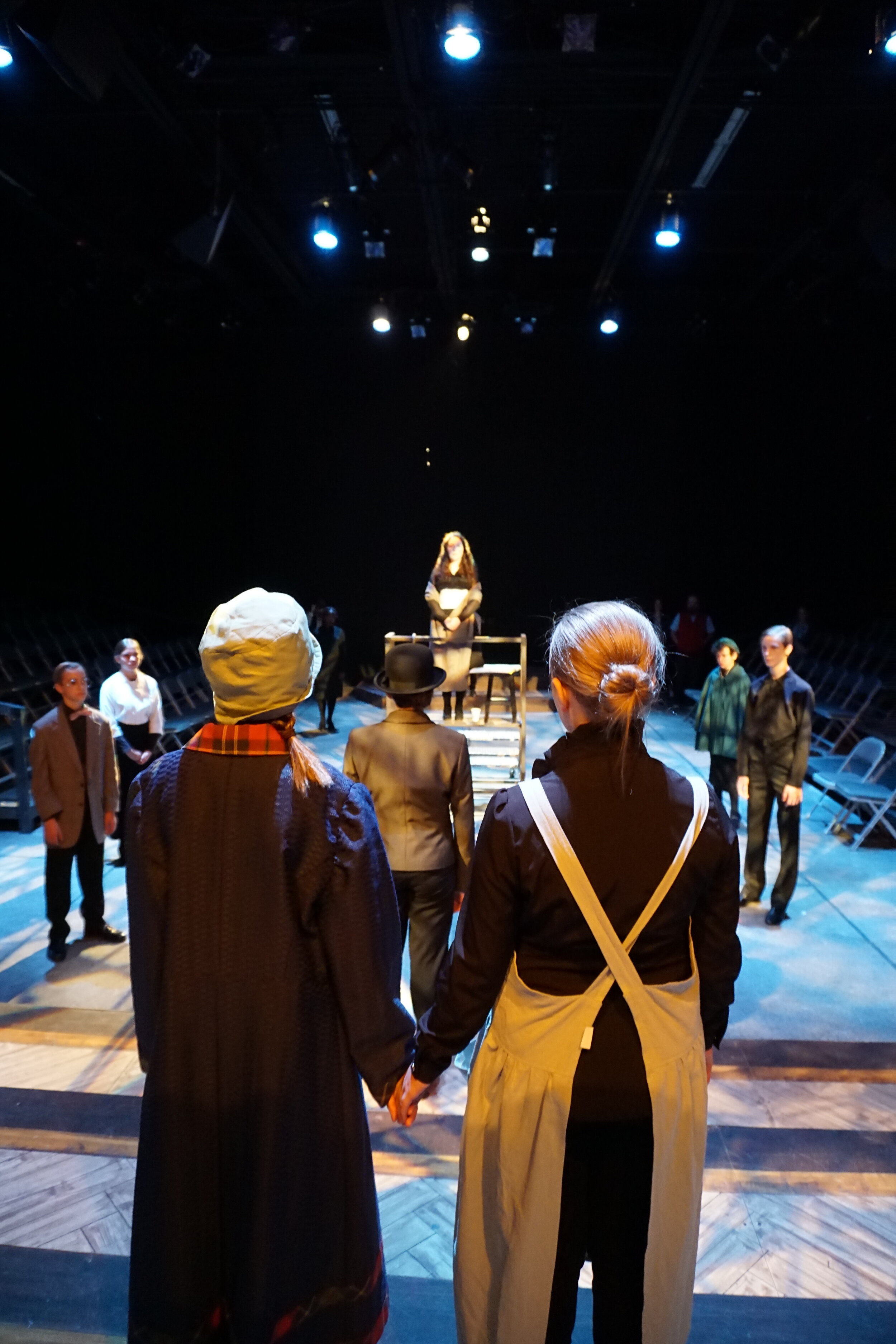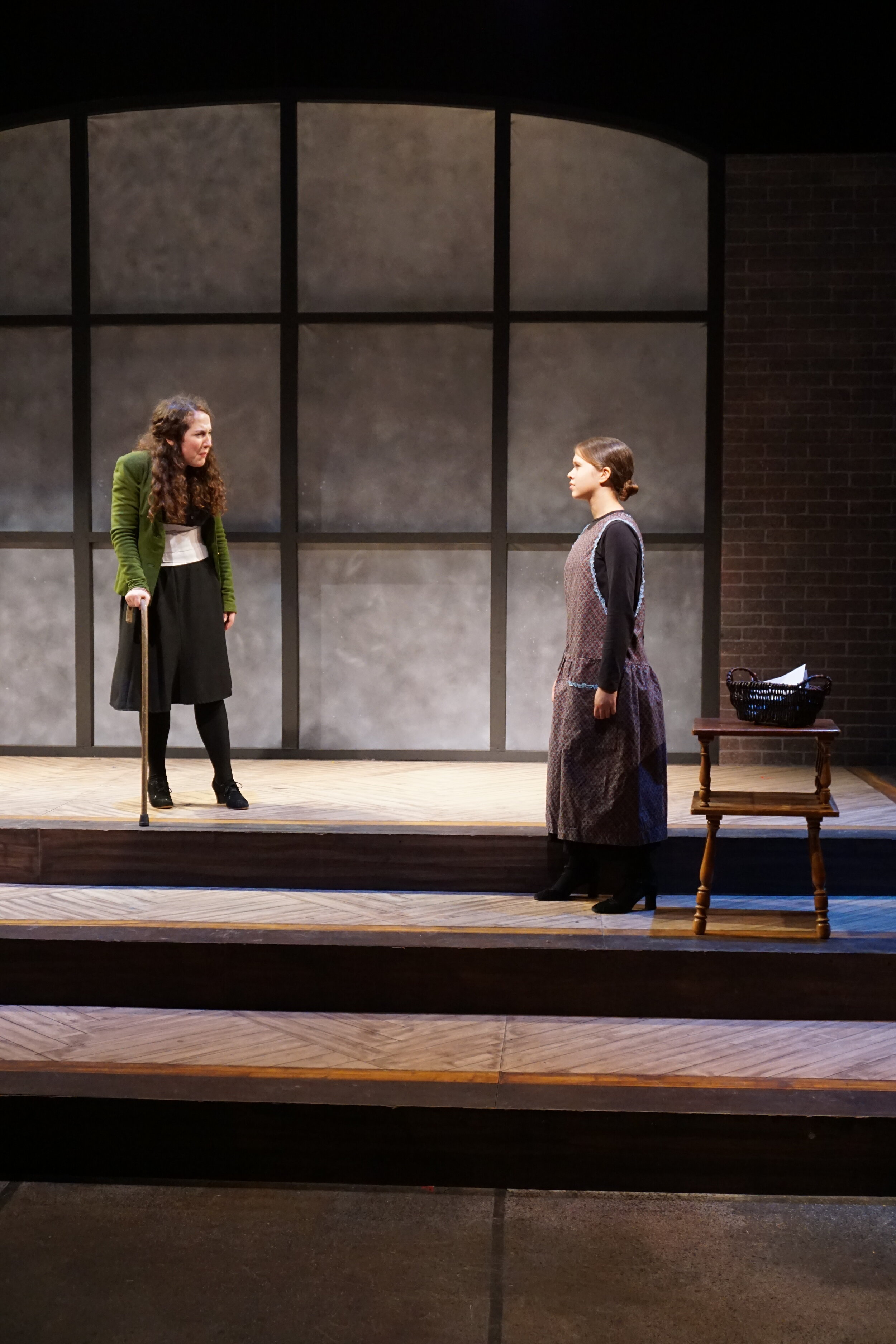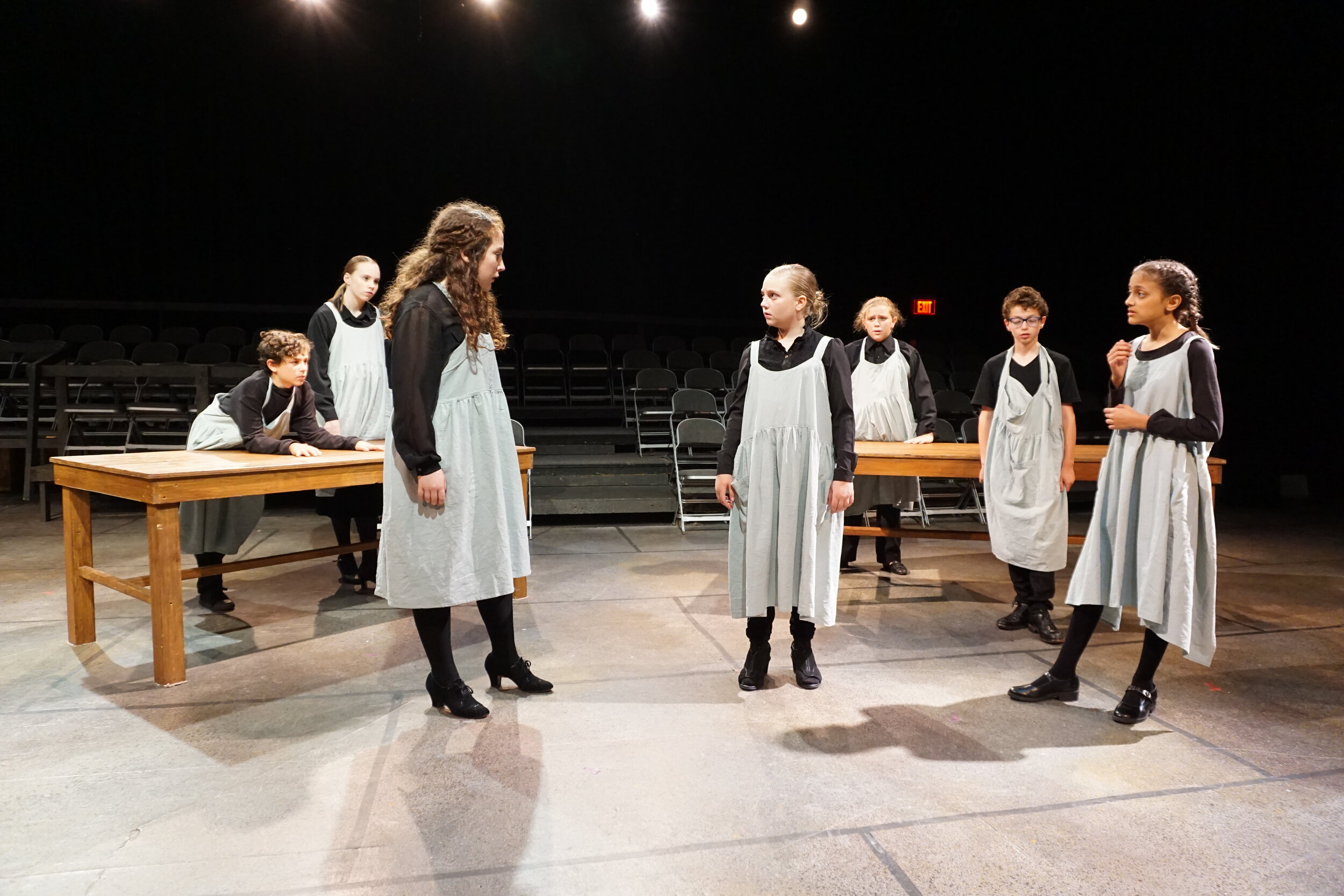























RADIUM GIRLS
Radium Girls is an intense play based on the true story of women who worked in watch painting factories in the 1920s in New Jersey. They were encouraged to use their lips to create a point on the brushes they used, and the paint, which contained phosphorous to make it glow, ended up poisoning many of the girls over time. Most of them died at a young age while waiting for their turn in court.
A few key elements of this design include the alley style staging, the Brechtian style of theatre, and the vignettes within the script used to tell the story. The alley was “graduated” in a compromise to The Drowsy Chaperone, the show it shared the space with. The director of Radium Girls used each end equally, with most of the action happening in the alley between. He wanted to use the stark brutality of Brechtian style theatre to convey the dire nature of the subject and to leave the focus on the story, not the surroundings. The vignettes were often news blurbs or reports that gave this play an element of reality, and happened with spotlights in various places around the theatre.
A big challenge of this show was creating the seating arrangement in the black box space. In early discussions, the director of Radium Girls suggested an alley set up. The Drowsy Chaperone director was not convinced, but I managed to create a hybrid that we all thought might work. The seats were arranged in what I call a “graduated alley”, meaning the seating banks faced each other like a typical alley set up, but tapered off on one end to open up the space. The Radium Girls director was able to use the space like a traditional alley.
The tone of this show couldn’t be more different than Drowsy. Instead of being light, fun, and full of color, Radium Girls is dark, cold, and dripping with disdain for the upper class and corporate oppression. Neutral tones allowed me to accomplish both. For Radium Girls, the neutral background served well as a factory and a courtroom.
